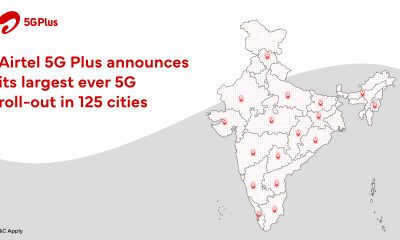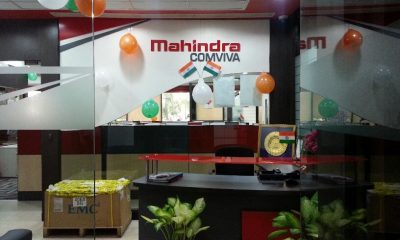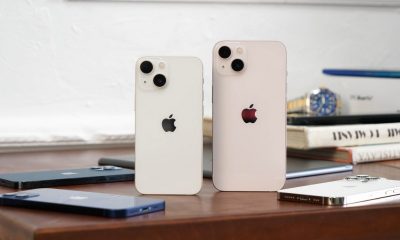5g
5G takeaways for telecom operators from mobile video industry council


Indranil Chatterjee-Sr. Vice President
By Indranil Chatterjee
Mobile video is growing at a phenomenal rate, but it is a double-edged sword. Openwave Mobility’s research on live operator networks found that currently video is 58% of traffic by volume worldwide. Subscribers love it, but monetizing it is easier said than done, given the flood of HD content and encryption that is adversely impacting Quality of Experience (QoE). That was the clear message from operators across the board who attended the MViC.
The Council in fact debated the conflicting components of Video QoE i.e. Quality of Delivery (reduced buffering) versus Quality of Picture (resolution) and the implications. Why does this matter? That’s because when subscribers experience poor quality when streaming video our research found that consumers blame the operator, not the OTT. And it is only a matter of time before they churn. With more video traversing mobile networks than ever before, QoE is a major headache.
So, what were some of the key 5G takeaways for operators from the MViC?
1. The how and why of mobile video: Interestingly, most operators experienced growth in mobile video during 4G – from 2010 to 2015 – and it came as a result of increased video watch times. But, since 2015, growth in mobile video has come significantly as a result of a move to higher bandwidth HD content, rather than greater watch time only. That’s evidence of HD content from the likes of Netflix, YouTube and Amazon Video growing in popularity. As operators prepare for the dawn of 5G, there is one sure-fire certainty: HD content (including 4K and soon 8K content) and therefore mobile video will soar.
2. Skyrocketing mobile video
The MViC forecast on the day that 90% of traffic on 5G will be mobile video. Dimitris Mavrakis, Research Director at ABI Research also highlighted some key 5G mobile video insights during his MVIC presentation: “5G Vision and Deployments”. Some operators are yet to fully monetize 4G and they are already looking at 5G as an enterprise vertical enabler. According to Mavrakis, 5G will initially be used to improve the consumer user experience – and surprise surprise – mobile video will spearhead this strategy.
In 2016, mobile video represented 48% of traffic and ABI Research predicts that 5G’s mobile video growth will accelerate in 2022. By 2025, video will reach 78% – and here’s the punch line: 40% will be 4K video that sucks up bandwidth.
3. Way more encryption
Remember the fanfare when 4G was launched? 4G was all about mobility and connectivity. It propelled companies like Waze, Uber and Spotify. Also, Edward Snowden happened. The shockwaves it sent encouraged many OTTs to jump at the opportunity to encrypt their data. The likes of Google and Facebook coated their data with secure protocols that prevented operators from managing the very data that travels on their own networks. Encryption is here to stay – and with 5G, it will intensify. 5G technologies will usher a new wave of mobile video data – much more diverse than 4G.
4. Way, way more data intensity
5G has far more data intensive services and already, OTTs are lining up to take advantage of immersive services such as Augmented Reality (AR) and Virtual Reality (VR). However, Augmented Reality can be 33x more data intensive than equivalent 480p video. And with it comes more encryption. And if that was not enough, it is expected that OTT services will have more subscribers than pay TV customers when 5G becomes widespread.
5. 4G/LTE Networks will remain for years to come
While all the focus on 5G is well deserved, our customers are quick to point out that 4G/LTE networks are not going away anytime soon as they will be critical to ensure nationwide coverage. From an investment perspective, the focus for 4G networks will shift from new build-outs to maximize the capacity of these networks. This means tools such as RAN Congestion based video optimization will be critical to help operators preserve good QoE and enhance 4G RAN capacity while investing in 5G network build out.
New opportunities with 5G
The growth in 4G democratized mobile video. Thanks to a smartphone and a decent data connection, people can watch cute cat videos almost anywhere. A number of operators treated video like any other service. They didn’t consider it important enough for preferential treatment. Of course encryption did not help the cause either for many operators. 5G can change all that.
Armed with new optimization technology, 5G provides the opportunity for more granular service prioritization and network appropriation. If operators get their ducks in a row, 5G can indeed provide the impetus for the creation of a new video ecosystem.
5g
Ericsson has been ranked as the leader in the Frost Radar 5G Network Infrastructure Market 2024
For the fourth consecutive year, Ericsson has been ranked as the leader in the Frost
Radar™ 5G Network Infrastructure Market 2024 analysis, highlighting the impact of the
company’s strategy to meet the evolving needs of communications service providers (CSPs).
Maintaining top ranking in the Frost Radar™ report over the past years has shown that
Ericsson’s investments in R&D and across a wide product portfolio – which includes all areas
of 5G network infrastructure as well as previous generations of network infrastructure – is
valued in a market where technology is constantly evolving.
The report has also acknowledged Ericsson’s sustained focus on offering the latest and
lightest energy-saving products and solutions. It also touched on the company’s Open RAN
plans.
Fredrik Jejdling, Executive Vice President and Head of Networks at Ericsson, says: “The
latest Frost Radar report highlights our unwavering commitment to innovation and technology
leadership through the most competitive portfolio. In a challenging market, we remain
focused on our customers and move forward with even greater determination.”
Commenting on Ericsson’s top ranking, Troy Morley, Industry Principal, at Frost & Sullivan’s
Information & Communication Technology group, says: “Ericsson has done an excellent job
keeping its current customers and adding new customers, including significant replacement wins over competitors. Ericsson has a significant pipeline of customers that have yet to move
to 5G but will over the coming years.”

Ericsson currently powers *160 live 5G networks in 68 countries, which is the highest level
that Frost & Sullivan has seen publicly reported.
“Ericsson’s strategy continues to center on CSPs’ evolving needs in all areas of the world,”
Morley says. “However, with its 2020 acquisition of Cradlepoint, Ericsson also is expanding
its role with enterprise customers.”
The report has also discussed the importance of the open and virtual RAN movement and
the belief that eventually open and virtual RAN will be the norm. “Ericsson’s step into offering
Open RAN solutions in 2024 will help make this movement a reality,” Morley says. “The
company plans to offer O-RAN-compliant solutions in 2024; Frost & Sullivan believes this will
result in significant growth in open and virtual RAN revenue.”
Commenting further on the report, Morley says: “Energy efficiency has been a buzzword for
a few years and Ericsson continues to tout solutions that are smaller and lighter and that
save energy, answering its customers’ needs. This will continue with its traditional RAN
solutions and accelerate with its new Open RAN offerings.”
The Frost Radar report measures growth rates in addition to absolute revenue and combines
them with several other factors to measure companies’ performance along the Growth Index.
The report also measures innovation for each company by assessing its product portfolio, the
scalability of its innovations, the efficacy of its R&D strategy, and several other factors.
The latest report from business consulting firm Frost & Sullivan reaffirms Ericsson’s
leadership in the 5G network infrastructure market, which spans radio access networks
(RAN), transport networks, and core networks.
5g
Ericsson Showcases differentiated connectivity for the value of 5G

Ericsson (NASDAQ: ERIC) showcased its advanced 5G connectivity solutions and innovative 5G use cases based on differentiated connectivity at the Ericsson Imagine Live Roadshow today. Ericsson has announced the launch of a new software toolkit to strengthen 5G Standalone network capabilities and enable premium services with differentiated connectivity. The portfolio enhancement comes as the growth of new use cases and rising mobile user expectations on the quality of 5G experience are putting greater demands on network capacity and performance.
In the ‘Capture the value of 5G’ zone, experience sports like never before with the Enhanced Sports Experiences demo, where a feature-rich app allows sports clubs to engage directly with their vast fan bases, creating new revenue streams. Leveraging network slicing and APIs, service providers can ensure the ultimate fan experience and gain revenue share.In 2024, Ericsson is extending CSP slicing subscriptions to include micro-payments for short-term connectivity needs.
Another demo called Superior Uplink for Live streams, offers seamless real-time livestreaming via commercially available smart glasses, overcoming the hindrance of 5G upload speeds with Uplink Carrier Aggregation. This technology boosts upload speeds by combining frequencies, enhancing performance, promoting Standalone 5G adoption, and optimizing spectrum utilization.
In the ‘Programmable Networks’ zone, we’re showcasing how Ericsson is transforming the mobile network landscape by enabling elevated service differentiation for premium 5G experiences with Service Level Agreement assurance, revolutionizing CSP offerings. Ericsson’s new software toolkit with advanced RAN and Core capabilities empowers CSPs to seize growth opportunities by providing differentiated connectivity at scale. Another demo showcases how our RedCap technology supports CSPs’ business growth by reducing the complexity and size of device platforms for mid-tier use cases, expanding the 5G ecosystem to cater to diverse connectivity needs across consumer and enterprise/industrial segments on both FDD and TDD bands.
The ‘Enterprise Transformation’ zone showcases how critical infrastructure industries such as power plants, wind farms, and oil refineries can enhance worker safety and efficiency with our private 5G networks use case demos. Partnering with RealWear and OverIT, we enable secure, reliable, realtime access to complex data in order to provide an immersive connected worker experience for use in hazardous environments where accurate positioning and the ability to handle a high density of connected devices is required.
In the ‘Shape our Future Together’ zone, we’re building on the successful API showcase at Mobile World Congress 2023 with partners like Zoom and Blacknut. This year we are demonstrating high-demand use cases with world-leading brands such as Toyota and Sony using QoD API with network slicing. This underscores Ericsson’s thought leadership in the Network API and 5G monetization space, aligning with our strategy to build a platform business and our vision of industry cooperation with strong partners.
5g
MediaTek Catch-up with Tech: Infinix Zero 30 5G with Dimensity 8020 launched

NEW DELHI: Chipset maker MediaTek, which claims to power more than two billion connected devices every year, hosted ‘Catch-up with Tech’ in collaboration with handset brand Infinix on August 28 to share insightful and engaging conversations about the new-age smartphones and innovative technologies powering everyday lives.
The meet-up threw the spotlight on the MediaTek Dimensity Auto, Satellite solutions and Generative AI along with an extensive showcase of newly-launched Infinix Zero 30 5G powered by MediaTek Dimensity 8020, Infinix GT 10 Pro powered by MediaTek Dimensity 8050, and Infinix QLED TV powered by MediaTek.
In terms of specs, the Infinix Zero 30 5G is tailored for young storytellers and creators, featuring the first-ever smartphone to deliver 4K 60fps video recording from its 108 MP OIS rear camera and ultra-high resolution 50MP front camera. The Zero 30 series powered by MediaTek Dimensity 8020 is said to be a game changer for the front camera vlogging experience along with being the slimmest curved AMOLED smartphone in the segment with glass and a vegan leather back panel. It also claims to be one of the most premium-looking devices in the segment.
The event witnessed a panel discussion moderated by Anuj Sidharth, Deputy Director Marketing & Corporate Communications, MediaTek and included expert panelists from Infinix, MediaTek and two renowned professional photographers.
“With the fifth edition of Catch-up with Tech, we aim to bring consumers closer to the technology and enable them to make informed buying decisions based on their diverse needs. In collaboration with Infinix, this meet-up is in-line with MediaTek’s vision of technology democratization and making innovative technology accessible to everyone,” said Anku Jain, Managing Director, MediaTek India. “The MediaTek Dimensity 8020 in Infinix Zero 30 5G brings faster displays, brilliant cameras and ultra-fast performance. Further, MediaTek Imagiq technologies enrich the capture experience by combining dedicated AI, imaging processors and accelerators to provide incredible results,” he added.
Anish Kapoor, CEO, Infinix Mobile India, said, “Featuring India’s first 50MP 4K 60 fps video recording, Infinix Zero 30 5G is primed to redefine smartphone imaging capabilities, setting a new standard for the creators and vlogging enthusiasts. Our collaboration with MediaTek has played a pivotal role in shaping our exceptional smartphone portfolio, and the Zero 30 5G stands as evidence of our unwavering commitment to innovation and delivering unmatched experiences to our users. The display and design of the device represent a leap forward in smartphone technology. As Infinix Zero 30 5G hits the shelves, we are positive that our customers will find this new offering as exhilarating as we do, further empowering creators to capture their story like never before.”
Radhakrishnan Chakyat, a photography evangelist, founder and host of Pixel Viilage, said, “Infinix Zero 30 5G smartphone powered by MediaTek Dimensity 8020 chipset has amazing hardware features, an excellent camera, dual-view video mode and is primed for optimal content creation and saves a tremendous amount of editing time.”
Aarzoo Khurana, a wildlife photographer, said, “Over the last few days, I clicked various pictures and recorded a few videos with the newly-launched Infinix Zero 30 5G powered by MediaTek Dimensity 8020, and the experience has been truly inspiring. Infinix’s smartphone’s OIS feature helps content creators click shake-free pictures and the front camera, which is extremely sharp and detailed, enables content creators to click countless selfies.”
-

 News3 weeks ago
News3 weeks agoMobile tariff hike:Congress blames NDA government for Rs 34,824 crore burden on public
-

 News7 months ago
News7 months agoYotta’s Cloud Data Center in GIFT City, Gujarat goes live
-

 5g2 months ago
5g2 months agoEricsson Showcases differentiated connectivity for the value of 5G
-
5g2 months ago
Ericsson has been ranked as the leader in the Frost Radar 5G Network Infrastructure Market 2024
-

 News1 month ago
News1 month agoIndian Tech Startups Surge Ahead with $4.1 Billion in Funding for H1 2024














